Sleeping well is critical to your overall health, and it’s in your power to improve the quality and consistency of your rest. Your sleep may seem impossible to control, but healthy habits like maintaining a regular sleep schedule, getting plenty of sun exposure, exercising regularly, and eating nutritious meals go a long way. You can also get help from sleep aids and accessories, like sleep masks, white noise machines, and CPAP machines for sleep apnea.
One major purchase can make a significant difference for your sleep health: buying the right mattress. Whether you’re moving, getting married, have growing children, or simply want to upgrade, a new bed is an investment in your health and wellness. You’ll have your new mattress for the next 10 plus years, so be sure to shop carefully and find the right fit for your needs.
Just as Apple has the budget iPhone SE and the premium iPhone 13, mattresses range in price and quality. If you shop diligently and find a high-quality option at a fair price, it should work out to no more than a dollar day. Think about your new bed as an investment—it repays you each day with quality sleep.
March 13 to 19 is Sleep Awareness Week 2022, and the National Sleep Foundation is offering advice and information to help you up your sleep game. It’s also a great opportunity to save, as sleep vendors like Nolah Mattress have promotions and deals all week.
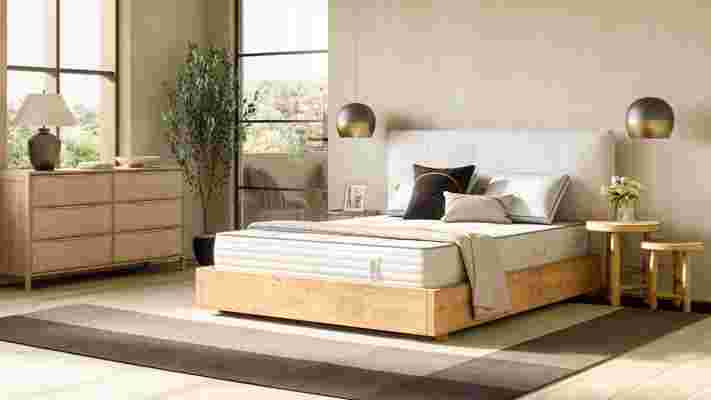
Nolah Mattress E-Shopping and Sleeping Benefits
Nolah Mattress offers five mattresses, offering a perfect fit for all budgets and sleep styles. Currently, they have two all-foam models (the Nolah Original 10” and Nolah Signature 12”), the foam hybrid Nolah Evolution 15, the latex hybrid Nolah Natural 11", and the flippable Nolah Nurture 10" kids’ mattress.
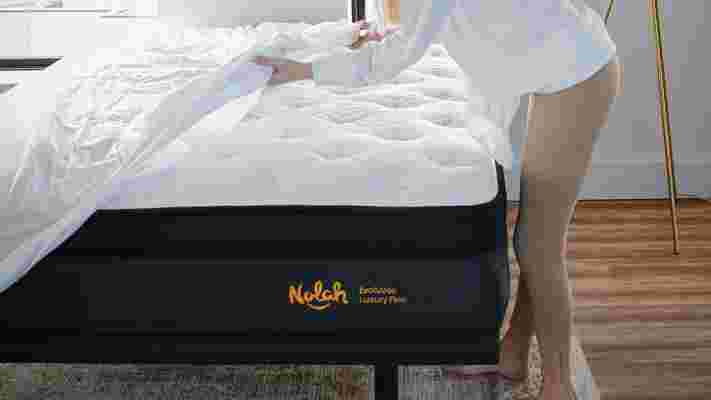
All Nolah mattresses are made in the U.S.A. and crafted with either proprietary Nolah AirFoam™ or best-in-class Talalay latex. Both materials are superior to standard memory foam, an outdated material used by most brands. Nolah’s mattresses offer the following features and benefits:
Nolah also provides online shopping conveniences, selling all mattresses and sleep accessories exclusively on their website. Shoppers can take advantage of these policies:
Act now and save! Go to NolahMattresom to learn more and take advantage of limited-time Sleep Awareness Week deals.
20 years on: How Sonos invented the future of wireless audio
2022 marks Sonos’ 20th anniversary. Over the last two decades, the company has mastered the art of hi-fi, pioneering smart speaker systems and intuitive control, and creating a brand that is now synonymous with whole home music.
Even though Sonos makes wireless audio look easy, it took a while for the company to get to this point - and it hasn’t been without a completely smooth ride. A controversial decision to jack up its prices in 2021 means Sonos speakers are among the most expensive consumer hi-fi products on the market, while a decision to brick older products was reversed following a public outcry.
There’s a lot we love about Sonos, though. Devices like the Sonos Arc , Sonos Move , and Sonos Beam routinely top our ‘best of’ guides. In this feature, we take an unapologetically rosy look back at 20 years of Sonos’ greatest hits, with anecdotes from those who were there during that time.
Sonos: the early years
Founded in 2002 by John MacFarlane, Tom Cullen, Trung Mai, and Craig Shelburne, Sonos was built on a novel premise: home networking is the future of music. The quartet of music lovers believed that one day, snaking interconnects and complex hardware stacks wouldn’t be necessary to enjoy great sound at home; in fact, there would be no physical media required.
Remember that back in 2002, there was no iTunes or Spotify . The iPod had just been released, and CDs were still fairly popular though MP3s were really the way to go. The landscape of listening to music was shifting, but back in 2002, if you wanted to be surrounded by sound around the house, you simply cranked up the volume or did the work by pulling the necessary cables through the walls.
Stephen Rhead, Sonos Installed Solutions in the UK & Nordics: “When I started working with Sonos nearly 12 years ago, we’d go to speak with retailers and installers. You had to ask, ‘Have you heard of Spotify?’ If they said yes, then you could explain what Sonos was and how it worked. If they didn’t, then you’d have to explain music streaming, which blew their minds.”
When Sonos made its first showing at CES in 2005, it quickly became clear that the brand wasn’t just another hi-fi wannabe. Bill Gates was one of the first to be given a demo of the original ZonePlayer 100 (ZP100) and CR100 controller at the Las Vegas tech show.
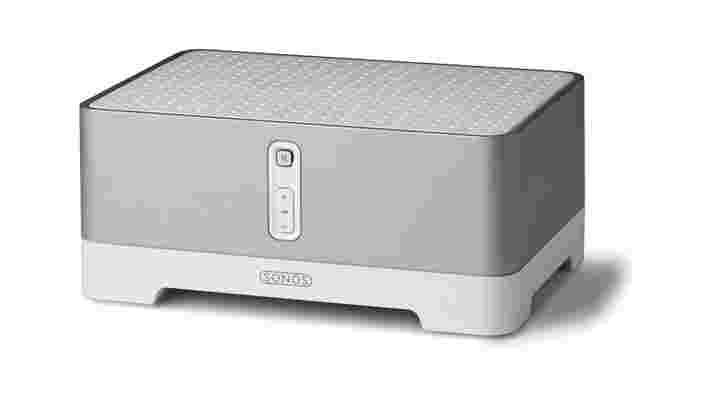
When Sonos first launched, the company wasn’t just selling a product – it was selling the idea of network audio, an entirely new way of listening to music in the home. So how difficult was selling the idea of multi-room music when Green Day’s American Idiot was topping the charts? Very, apparently.
Tad Coburn, Principal Software Engineer: “The early versions of Sonos did not rely upon the user's Wi-Fi router. We required one of the Sonos players to be wired via Ethernet to the user's router. [Then] the other players could communicate wirelessly to that first player via SonosSet (which is Wi-Fi). Sonos definitely did not trust the user's router back in 2005!
“Another thing to remember is that when Sonos first shipped, there were almost no music streaming services. Our first products [were] centered around the user's Local Library, a shared directory on their PC [or] Mac, or an NAS drive where the user put all their ripped CDs. That sentence probably doesn't even make sense to most people now…”
But the brand’s perseverance (and some groundbreaking work on mesh networks) would shortly lead consumers by the hand into an all-new, multi-room music environment. The way we would interact with music was about to fundamentally change.
“Bringing Sonos into my home was game-changing,” recalls Sara Morris, Sonos Principal Product Manager. “Now, music is everywhere. Chores are time to catch up on my favorite podcasts; dance parties are part of my routine; and if I want to get more popcorn, I can pop into the kitchen and not miss the game. At the time, I didn’t know all the work that went into making that magic happen, but now I get why Sonos has over 1700 patents: we had to invent the future.”
According to Sonos’ own ‘How it started‘ blog , the first song played in public on the ZP100 was Beastie Boys’ No Sleep Till Brooklyn. Sonos went on to release a Beastie Boys limited edition Play:5 speaker in 2018, with all proceeds going to charity.
Reviewers were positive from Sonos’ very beginnings, with both ease of use and audio quality universally praised. But while sales were solid, something was missing from the ecosystem. That turned out to be the original Play:5 wireless speaker , which was introduced in 2009. The Play:3 followed in 2011, and the Play:1 in 2013.
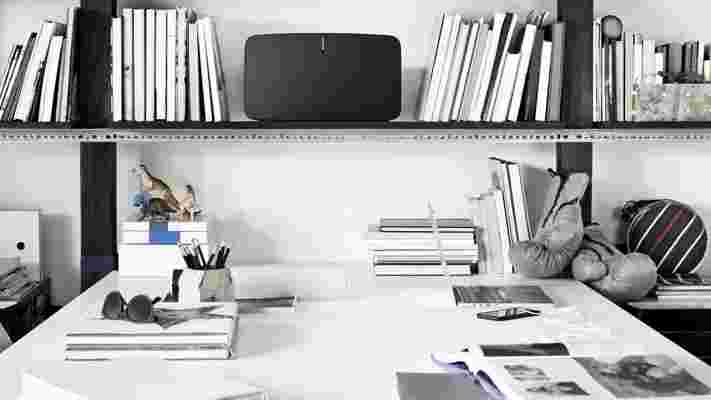
Sonos: better by design
Technological innovation may have been key to Sonos’ success, but design has also been a touchstone. Minimalist, contemporary, almost architectural – the brand has fine-tuned its own design language over the years, reaching Red Dot Award status in the process. With innovative finishes and materials (it even developed its own plastic resin for speakers and subwoofers), its products are noted for painstaking levels of fine detail.
“Moments that stick out in my mind are when we’re sweating the details, working on something that one could reasonably say is not worth addressing – and yet we want to get it right,” Scott Fink, Sonos Distinguished Product Manager tells us.
“For example, in 2012, deep into the development of Playbar (Sonos’ first soundbar , released in 2013; direct ancestor of the brilliant Sonos Beam ), we made a pretty big change to the fabric grille to improve heat dissipation in the product. After making the change, everything was working well. The thermal concerns were addressed. The acoustic performance was unaffected. And the fit and finish were on point. Except… a beta tester shared a photo of their Playbar at home with a faint grid pattern on the fabric grille. It didn’t look right, and we hadn’t seen this on any other unit.
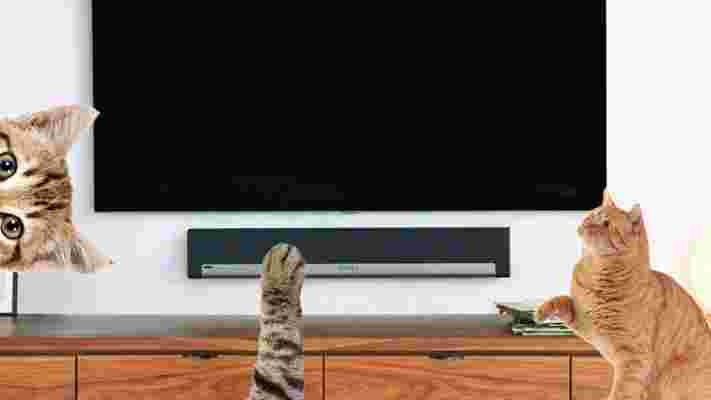
“It turned out the beta tester had a cat that loved rubbing up against [the] Playbar, which was prompting the tester to vacuum their Playbar every day. The frequent stretch and rub of the fabric against the underlying frame was causing the faint grid pattern to appear. While most customers were unlikely to encounter the issue, we didn’t love the idea of Playbar’s appearance over time being impacted by someone simply wanting to keep it clean.
“With an extremely small window of time before the start of mass production, the Playbar team leapt into action, converting an entire wing of our Santa Barbara engineering lab into vacuuming test lines. To solve this problem, we needed to subject multiple variants of the fabric grille to thousands of vacuum strokes. There was no time to automate the test lines; we needed to vacuum by hand. So we asked people from across the company to come into the lab and, well, vacuum. Engineers, designers, accountants, vice presidents. It didn’t matter – your title – anyone who could spare an hour and had a fresh arm helped out.
“With the right combination of fabric, tension, and adhesive, we resolved the issue. We didn’t have to, but I’m glad we did – so we don’t have to live in a world where you have to choose between a good-looking soundbar and your cat.”
It’s probably fair to say the Sonos Playbase didn’t achieve quite the success of the Playbar, but the ‘base, which rode a short-lived wave of plinth-like TV audio upgrades, was beloved by all who used it, and remains admired for the sheer precision of its construction.
More importantly, it was to prove pivotal for Sonos products that followed.
“It’s been really heartening to hear an outsized amount of love for Playbase from customers,” says Fink. “It so uniquely solves the problem of ‘fitting’ amazing home theater sound into your living space that I’ve noticed people go out of their way to let us know their appreciation for the product.
“Our research and development gaze is always aimed forward though, as we try to predict how we can best help and delight customers several years into the future. We began seeing trends – such as Dolby Atmos, that benefits from up-firing speakers, and increasing sales of extra-large TVs that end up mounted to the wall – that were no longer aligned with the value proposition of the product. So I’m actually really proud of the team, for having the discipline to not default to ‘turning the crank’ on a next-gen version and instead focus on completely new home theater challenges for us to go and solve.
“What’s probably not obvious is that many parts and processes in Playbase actually have evolved and gone on to improve new Sonos products. The thin transducer design of the woofer; the precision-drilled holes of the wraparound speaker grille; the exceptional control over the laminar air flow through the bass port. A ton of learnings from Playbase help us make today’s and future Sonos products even better.”
Says Morris: “Playbase was a product of many years of research into how people live; and the insight that we don’t always want to see a speaker wasn’t lost on the team. Years later, we harnessed this insight as the foundation of other products and in our IKEA partnership: people want sound but they don’t always want to see the speaker. How might we make sound, not speakers?”
The Sonos-IKEA connection
In 2019, Sonos unveiled the first of its collaborations with Swedish furniture super brand IKEA. No mere OEM branding opportunity, the Sonos / IKEA SYMFONISK, a neat bookshelf speaker / table lamp , harvested genuine synergy between the two brands.
So who made the first move in that partnership?
“I like to say that IKEA knocked on our door, but we were putting our coat on, about to go knock on theirs,” says Morris. “We’d each been doing our own user research and had realized a synergy between the power of sound to transform the feeling of home and also the challenge of fitting speakers into them. To bring this experience to life though, we needed each other. IKEA recognized they needed a partner with expertise in creating great sound experiences and we needed their expertise in understanding and furnishing homes across the world.
“I can’t speak to other collaborations, but I do know that the power of this partnership comes from the balance of our similarities and differences and staying curious. We share similar values and a passion for improving our customer’s lives at home, but we go about it differently. We value and respect that difference in thinking and some of our most innovative ideas have come from those differences!”
Of the original IKEA unveiling, Morris recalls: “The 2019 launch of the IKEA partnership at Salone del Mobile – the Milan furniture fair - was incredible. As the world was imagining how technology might fit better into people’s homes, we were there with IKEA introducing products to do just that. And in such an IKEA way: there were hot dogs and ice cream and the installation was so playful! It even included a kitchen rigged to play the sound of whatever you touched: you could make your own music! But my favorite part had to be watching people discover SYMFONISK. After years of development, I got to see the delight on people’s faces as they discovered they could have great sound without having to see the speaker – they could save space and power outlets, and it all worked together with Sonos.”
Sonos: What’s next?
20 years on, the Sonos of today is operating in a very different world from the one in which it was created. So where does it go next? Is the Sonos of tomorrow even a hi-fi brand?
“We’re a sound experience company more than anything else,” reasons Ninni Lindertz, Sonos Marketing Director EMEA. “For me, it’s always been about the experience, and how innovation improves and sparks joyful moments. Sonos as a brand has, of course, evolved over the 20 years we’ve been in business. We invented multi-room, made it sound amazing, and changed the way people listen at home during these years. I’ve always been inspired by our founders' curiosity and drive, that still define the way we look at innovation today.
“Over the years, Sonos has developed into a trusted go-to brand when it comes to immersive and moving sound experiences. Today, it’s a brand for audio lovers, as well as for those who value quality and lifestyle in general. We want to continue to illustrate how the Sonos experience is inclusive, human-centric and intuitive.
“And finally, the Sonos system adapts and improves. We know that the world of digital music and content is constantly evolving. I like to look at our brand in the same way - always evolving, always improving!”
Finally, Android 13 will ask your permission to show notifications
As another developer preview of Android 13 is released, Google has announced that it's finally introducing a way to manage new notifications, with a prompt.
According to a blog post , whenever you open a new app for the first time, a message box will appear, asking you to approve or deny any future notifications from the app.
This is a feature that's appeared in Apple's devices since 2010 with iOS 4 , so it's good to see Android catch up on a feature that's been requested for over a decade, though it's baffling that Google took this long.
Analysis: Lucky 13 for notifications

Google likes to take its time when it comes to Android, and a notification prompt is the latest in a long line of features that users have been wishing for.
For years, users had been wanting the company to offer official themes, and a way to change their color scheme across Android while having them adapt to the apps that they would use each day.
While Android 12 brought this out with Material You, there's plenty of room for refinements, as buttons and menus seem bigger than necessary.
So when it comes to how notifications look with these new themes, they look huge and not easy on the eye, especially if you pick the lime green theme.
But thanks to Android 13, it looks like more improvements to the themes are coming. Combine this with the new option to hide notifications from new apps at the start, and it could be a release that could satisfy old and new users who have been holding off from updating their phones.

